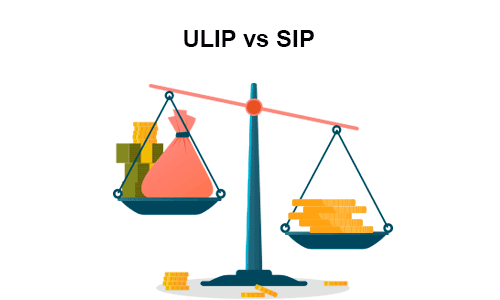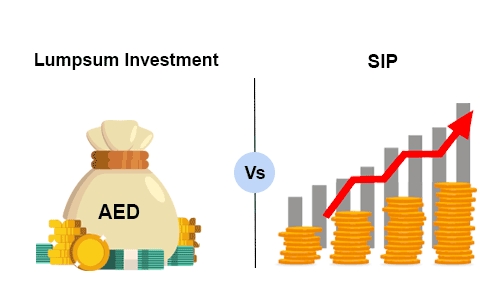ULIPS vs Mutual Funds – Which is a Better Bet?
In the vast world of financial investments, a plethora of options is available to accumulate wealth over time. However, the challenge, especially for beginners, is selecting the right option from a pool of different funds.
In this light, the debate over ULIP vs mutual funds often arises, leaving many prospective investors in a dilemma. ULIPs and mutual funds are two popular yet distinct investment avenues, each coming with its unique set of benefits and drawbacks.
Table of Content
Understanding the difference between ULIP and mutual funds is crucial to making an informed decision that aligns with your financial objectives and risk appetite. This article explains the fundamentals of ULIP plans vs mutual funds, helping you determine which one is better for your individual needs and preferences.
What are Unit Linked Insurance Plans (ULIPS)?
A unit-linked insurance plan (ULIP) is a financial product that merges the benefits of investment and insurance into one package. With a ULIP, one can grow their wealth while also securing life coverage. Offered by life insurance companies, ULIPs provide a dual advantage of wealth accumulation and insurance protection.
Given below are the 5 salient features of ULIPs -
- Dual Benefits: ULIPs serve the dual purpose of offering investment opportunities along with life insurance coverage under a single plan.
- Flexible Payments: Investors have the flexibility to pay premiums regularly or opt for a one-time payment, depending on the chosen plan.
- Allocation of Premium: The premium paid is strategically divided — one portion is allocated for life coverage while the remaining is invested in various market instruments like stocks, bonds, and so on.
- Potential Wealth Creation: The investment component of ULIPs allows individuals to potentially create wealth over time by capitalising on market opportunities.
- Security: Alongside wealth accumulation, ULIPs offer the security of a life cover, providing financial protection to the family in case of the policyholder’s demise.
What are Mutual Funds?
Mutual Funds are widely recognised investment vehicles managed by professional Asset Management Companies (AMCs). They pool money from multiple investors and allocate it across a diversified portfolio of securities such as stocks, bonds, and money market instruments. Mutual Funds aim to generate market-linked returns, allowing investors to accumulate wealth over time.
Here are the 5 key features of Mutual Funds -
- Professional Management: Mutual Funds are managed by experienced fund managers who make informed decisions on asset allocation based on extensive knowledge of financial markets.
- Diversification: They invest in a varied range of securities, which helps in spreading risk. This diversity in investment helps in managing losses when a particular security underperforms.
- Investment Modes: Investors can choose to invest through a systematic investment plan (SIP), where a fixed amount is invested periodically, or lump sum mode, where a substantial amount is invested at once.
- Market-Linked Returns: The performance and the returns of mutual funds are closely related to the market performance of the underlying securities, offering the chance for wealth accumulation.
- Accessibility: Mutual Funds allow a broad spectrum of investors to have access to professionally managed, diversified portfolios, which otherwise would be difficult for them to create on their own.
Difference Between ULIPS Vs Mutual Funds
Understanding the difference between ULIP and mutual funds is crucial for anyone looking to invest in either of them. While both ULIPs and mutual funds are meant to help investors grow their wealth, the route that they take is markedly different, entailing variations in risk, cost, flexibility, and purpose.
Here is a comprehensive table to understand the ULIP plans vs mutual funds distinction based on various parameters -
| Parameters | ULI | Mutual Fund |
|---|---|---|
| Purpose | Provides both investment and life insurance cover | Primarily focused on investment |
| Management | Managed by insurance companies | Managed by Asset Management Companies (AMC) |
| Investment Options | Typically offers limited fund options | Offers a wide range of fund options across different asset classes |
| Flexibility | Limited flexibility in switching between funds | High flexibility in choosing and switching between funds |
| Liquidity | Usually has lock-in periods and lower liquidity | Generally offers high liquidity, especially in open-ended funds |
| Costs | Often involves higher charges like premium allocation charges | Typically has lower costs with a transparent fee structure |
| Risk Exposure | Depends on the type of fund chosen within the plan | Directly correlates with the type of fund chosen — varies from low to high risk |
| Returns | May be lower due to part allocation to insurance premium | Potentially higher as the entire amount is invested |
| Life Coverage | Offers life insurance coverage | Does not provide any life coverage |
ULIP vs Mutual Funds – Which is Better?
Determining whether a ULIP or mutual fund is the superior option predominantly depends on individual financial goals, risk tolerance, and investment preferences.
For those who have a high risk appetite and are principally focused on wealth accumulation through market investments, mutual funds can serve as the ideal choice. They potentially offer higher returns and usually possess greater liquidity compared to ULIPs.
Conversely, ULIPs are more suitable for individuals seeking a balanced approach, blending the safety net of insurance with the prospects of earning market returns. They offer a dual advantage of wealth creation and life protection under a singular plan, allowing investors to potentially grow their money while staying shielded against unforeseen circumstances.
The intrinsic insurance cover within ULIPs provides a layer of financial security, which is especially beneficial to those who desire to consolidate their investment and insurance needs into one product.
Thus, the decision between ULIP vs mutual fund is not about which one is categorically better, but rather about which one aligns more closely with your specific requirements, financial aspirations, and risk capacity.
Here are a few points to consider -
- Financial Goals: Evaluate your primary intention — whether it is purely investment or a combination of investment and insurance.
- Risk Tolerance: Assess your ability to endure market fluctuations and potential losses.
- Investment Horizon: Determine the time frame for which you can comfortably stay invested.
- Cost Consideration: Examine the cost structures of both options to understand which one offers better value for your needs.
- Liquidity Needs: Analyse your liquidity requirements — if you might need to withdraw the investment earlier, mutual funds generally offer better liquidity.
Factors to Consider Before Choosing ULIP and Mutual Fund
When juxtaposing ULIPs and mutual funds, an in-depth understanding of the distinctions between them is necessary. It’s essential to contemplate various aspects before opting for one, as both come with their unique set of benefits and constraints.
To help you align your choice with your financial objectives and preferences, here is a simplified guide to the factors that you should consider.
Understanding Your Objective
- ULIPs provide dual benefits of investment and life coverage, catering to those who seek both financial growth and security in one package.
- Mutual Funds are essentially investment-oriented, suitable for those whose prime focus is wealth accumulation.
Evaluating Potential Returns
- Mutual Funds typically involve higher risks, possibly leading to high rewards or substantial losses as per market fluctuations.
- ULIPs, while offering relatively moderate returns, extend the reliability of life insurance benefits and create a safety net for the beneficiaries.
Assessing Investment Flexibility
- ULIPs allow you to allocate funds between investment and insurance as per your preference and even switch between equity and debt funds based on market trends.
- With mutual funds, investors can decide whether to invest in equity or debt funds. The allocation flexibility within the fund, however, is determined by the fund manager.
Scrutinising Expense Structure
- ULIPs impose multiple charges including premium allocation, fund management, administration, and mortality charges.
- Mutual Funds typically have a more transparent fee structure, primarily comprising management and operational fees, with no entry or exit fees for liquid funds.
Transparency and Information Availability
- ULIPs tend to be upfront about fund allocation, helping you understand where your money is going.
- Mutual Funds provide detailed reports on investments made, allowing for clearer insights into fund utilisation and performance.
Examining Risk Coverage
- ULIPs offer the assurance of a sum assured to the nominees in the event of the policyholder's demise.
- While Mutual Funds transfer the investments to the nominee, there is no sum assured in case of the investor’s demise.
Before Taking Off
The perpetual ULIP vs mutual fund debate underscores the need to understand the intrinsic value, benefits, and limitations of both investment avenues. The core differences between ULIP and mutual funds revolve around the investment objectives, the scope of benefits, and the inherent risk levels.
While Mutual Funds offer an extensive range of options for wealth accumulation for those with a high-risk appetite, ULIPs harmonise wealth creation with insurance protection. They serve as a holistic solution for those preferring a balanced financial portfolio.
‘ULIP vs mutual fund which is better’ is a subjective query, primarily depending on individual financial goals, risk tolerance, and investment horizon. Whether you lean towards ULIP plans or mutual funds, aligning your choice with your financial aspirations, risk capacity, and investment preferences is of the utmost importance.
By being informed about the distinctive characteristics, costs, flexibility, and liquidity of each type, you can make decisions that are in tandem with your long-term objectives and financial security.

More From Investment
- Recents Articles
- Popular Articles






.jpg)











.jpg)
.jpg)
















